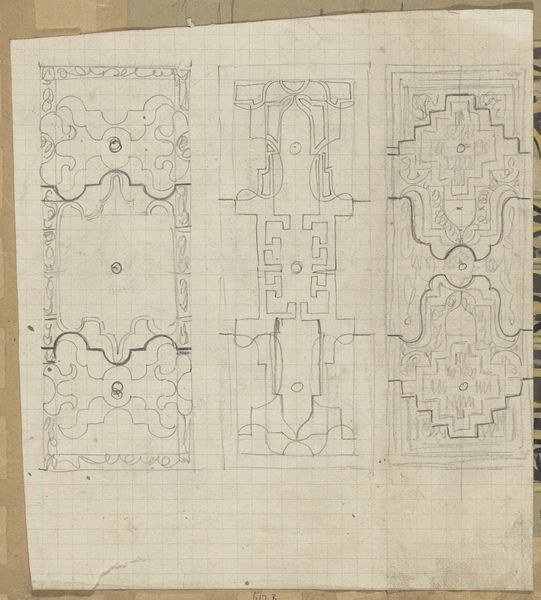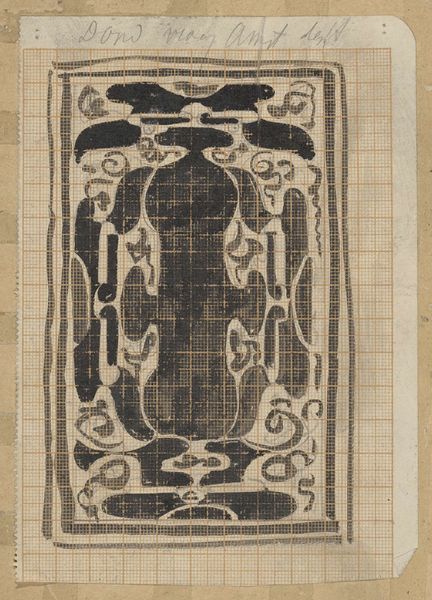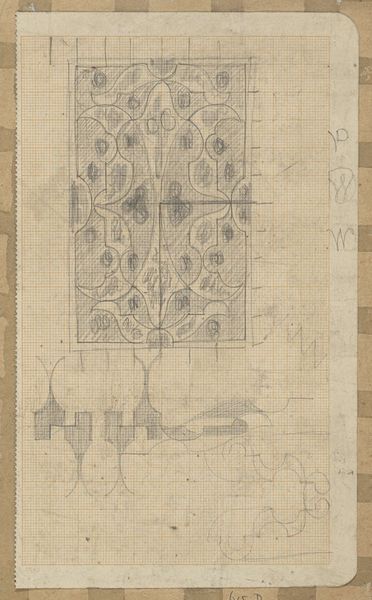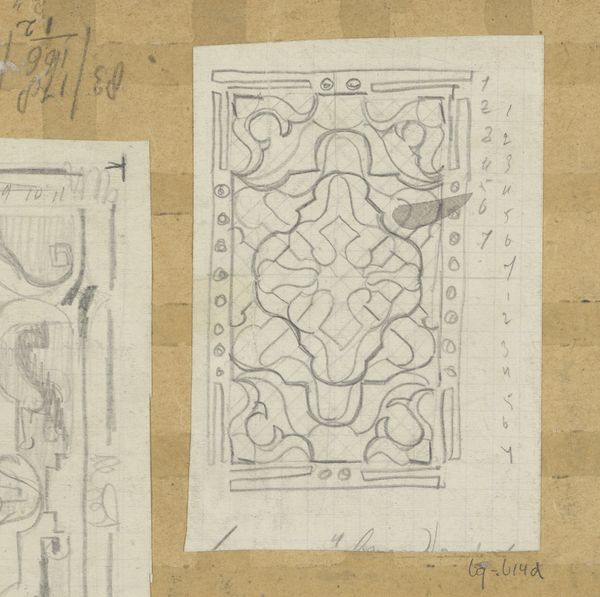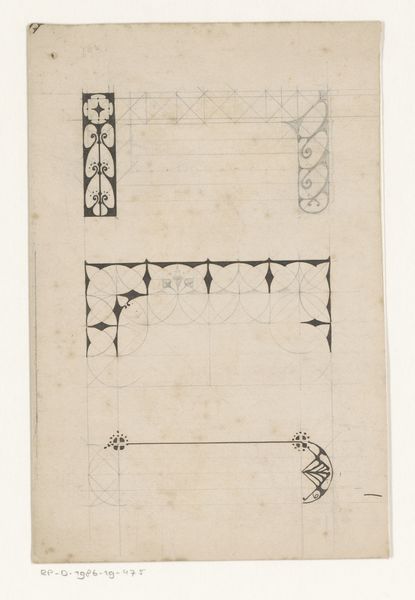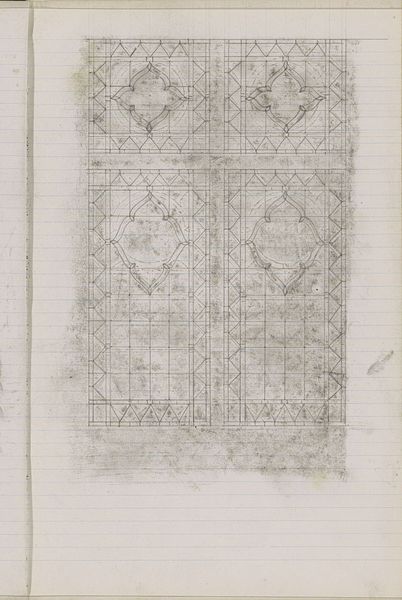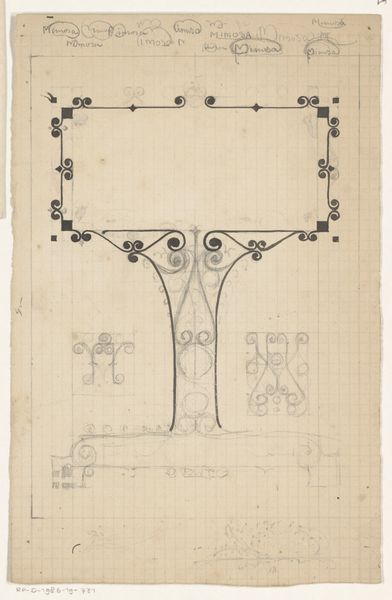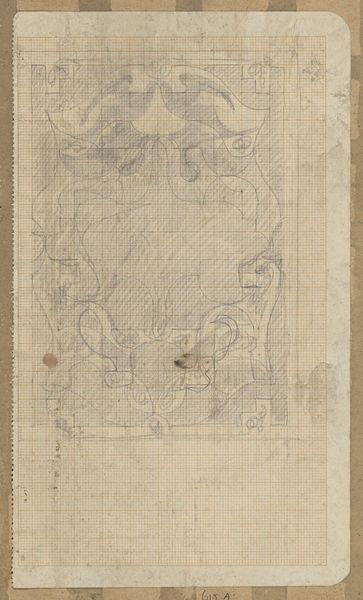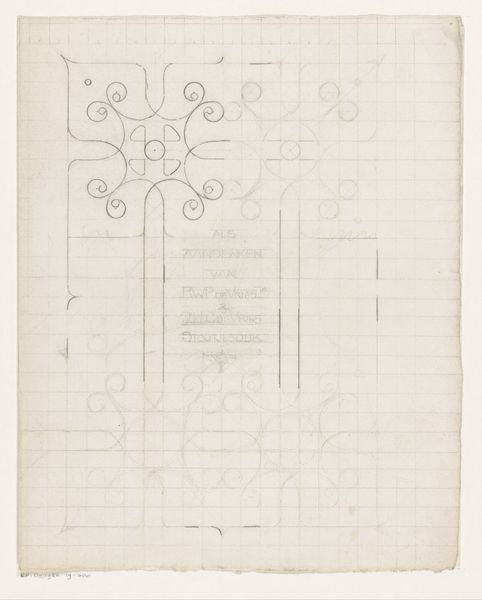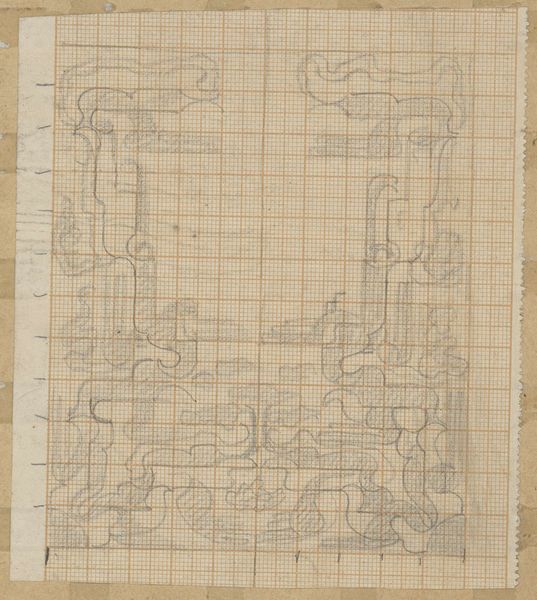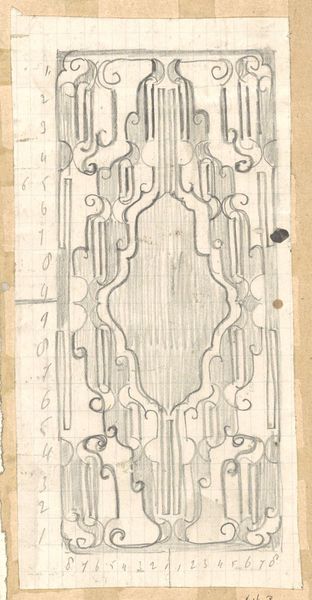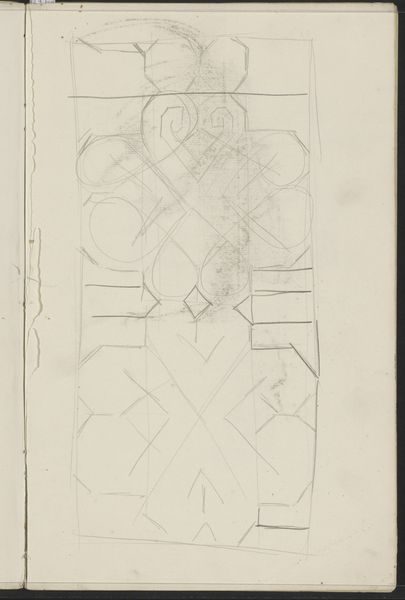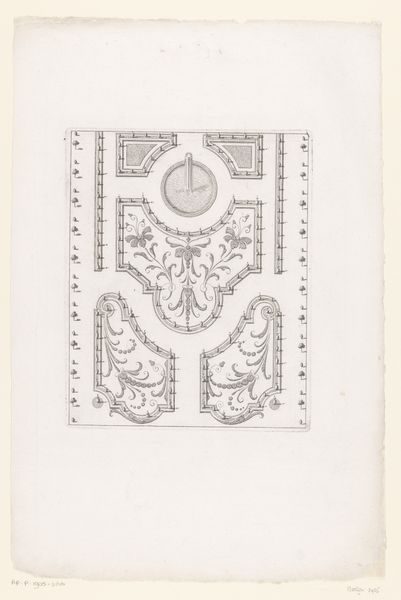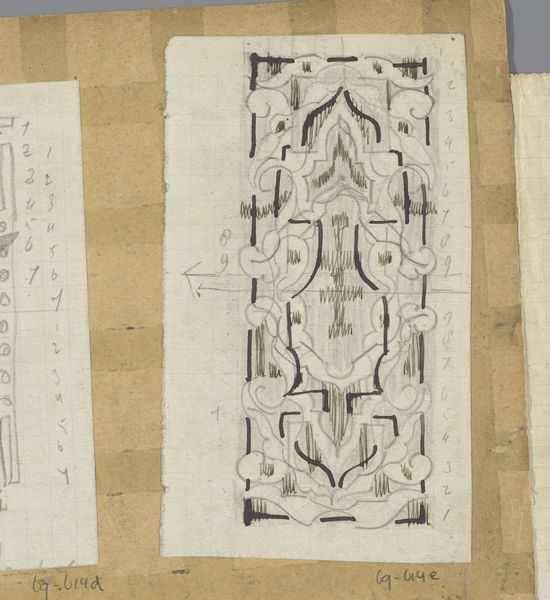
drawing, paper, pencil
#
drawing
#
art-nouveau
#
paper
#
geometric
#
pencil
#
decorative-art
Dimensions: height 206 mm, width 121 mm
Copyright: Rijks Museum: Open Domain
Curator: This drawing on paper, titled "Decoratief ontwerp," by Carel Adolph Lion Cachet, invites contemplation on the intersection of art nouveau and geometric design elements. It dates roughly from 1874 to 1945 and currently resides in the Rijksmuseum's collection. Editor: The gridded paper really catches my eye. It provides this immediate sense of process and structure, a window into how this design, both organic and rigorously geometric, took form. Curator: Absolutely. And the use of pencil, that humble medium, allows us to appreciate the iterative nature of design – seeing the artist's process. The motifs, swirling leaves juxtaposed with solid squares, offer an interesting symbolic duality. It presents both order and nature in this carefully planned way. Editor: Yes, but to what end? It's called decorative design. Was this meant for wallpaper, textiles, architectural ornament? The grid implies it was going to be expanded or repeated somehow, manufactured perhaps. It seems that Lion Cachet had in mind industrial reproducibility as part of the final presentation. The real value might have been tied to its distribution. Curator: Precisely. It hints at art intended for daily life, for integration into the domestic sphere, aiming to elevate ordinary objects through mindful design. Think of how pervasive such patterns would be: the symbolism would embed itself into the subconscious of the inhabitants of the designed spaces. Editor: Though what do you read into these specific images? It has the air of heraldry and coats of arms in their shapes, the kind you’d put on tapestries and china, or on the cover of expensive chocolate boxes. I mean, what's luxurious display if not pure visual commodity? Curator: Perhaps. It reminds me that these designs operate in this interplay between symbolic language of power and status on the one hand and domestic beauty on the other. These swirling designs, reminiscent of natural forms, could evoke prosperity or familial growth. It is up to us to consider what the owner's intent may have been. Editor: Looking at this design reminds us of all of the things required for luxury back then, materials that are still in demand and short supply, resources and their consumption. It encourages a new way of reading of material culture of beauty as the potential basis for social and environmental accounting today. Curator: Indeed. Studying Lion Cachet's design prompts reflection not only on the evolution of artistic styles but also on the cultural weight embedded within decorative arts and its relevance for today.
Comments
No comments
Be the first to comment and join the conversation on the ultimate creative platform.
